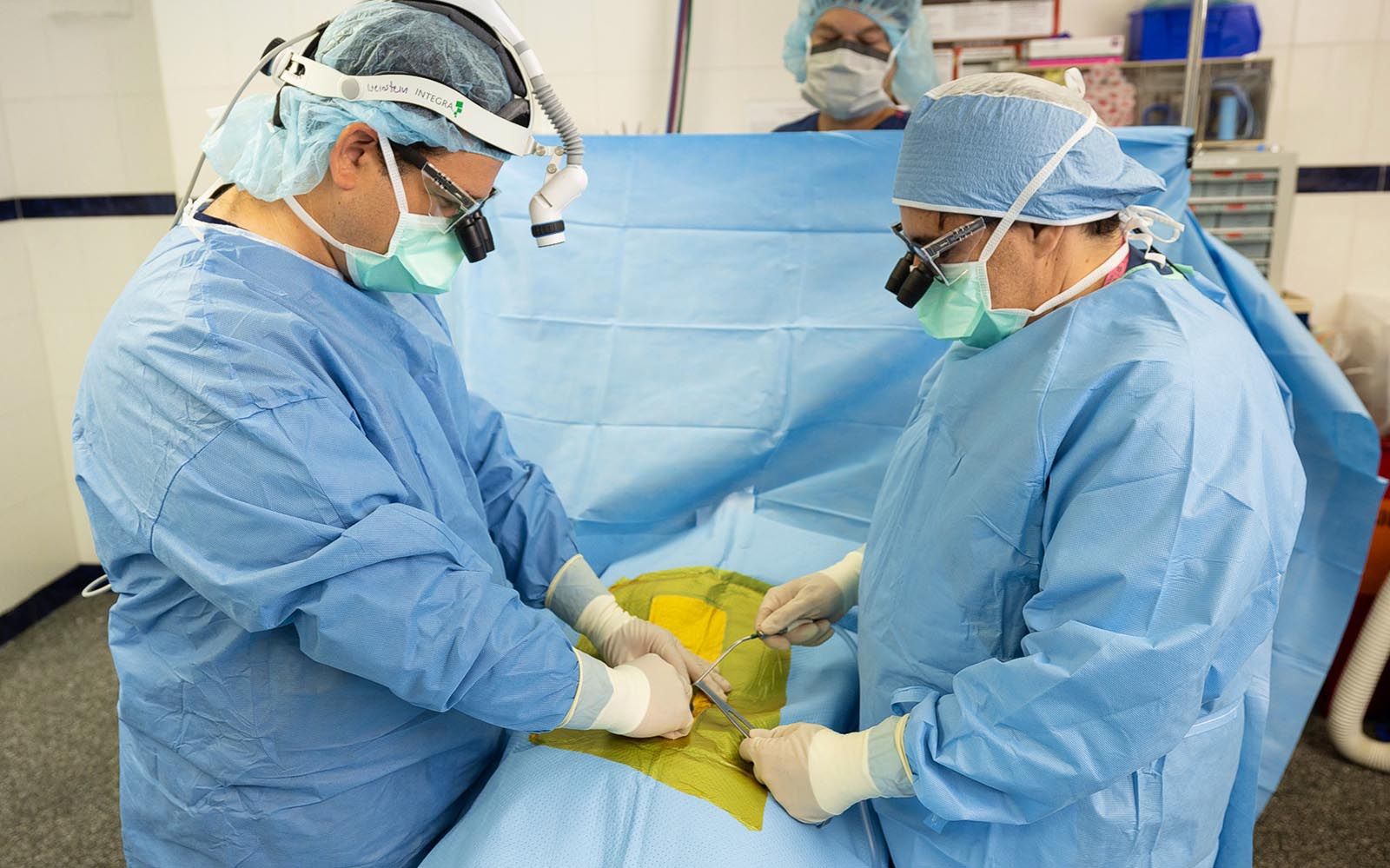
Minimally Invasive Spine Surgery
What is minimally invasive spine surgery (MISS)? Dr. Weinstein makes one or more small cuts to access your spine when performing MISS. Through these incisions, he makes repairs to reduce or relieve back and neck pain. Traditional spine surgery requires large incisions that cut into your muscles. Extensive tissue damage can cause considerable pain after surgery. It also takes you longer to recover.
MISS causes far less damage than open surgery, which means:
- Lower risk of infection
- Reduced bleeding
- Less pain
- Shorter hospital stay
- Quicker recovery
- Minimal scarring
Dr. Weinstein specializes in MISS, using the most advanced techniques to treat neck and back pain successfully. Why might I need MISS? Dr. Weinstein might recommend MISS if you have back or neck pain, and other treatments aren’t helping. Conditions that might require MISS include:
- Cervical radiculopathy (pinched nerves in the neck)
- Degenerative disc disease
- Herniated discs
- Myelopathy (spinal cord compression)
- Sciatica (pinched nerves in the lower back)
- Spinal stenosis (narrowed spinal canal)
- Spondylolisthesis (slipping vertebrae)
- Spondylosis (spinal arthritis)
The first treatments for these conditions include physical therapy and medication. Advanced treatments for pain that isn’t improving include epidural steroid injections and radiofrequency ablation. If you’ve had these treatments but are still suffering from back or neck pain, MISS could be the solution.
What happens during MISS?
MISS requires a general anesthetic (so you’re asleep during the operation) or a regional anesthetic that numbs the surgical site and a sedative to keep you relaxed. The place where Dr. Weinstein makes the first incision depends on his approach. Choices include your side (lateral approach), back (posterior approach), or front (anterior approach). For many minimally invasive surgeries, Dr. Weinstein uses a laser to make the incisions.
The laser cuts your tissue using light energy instead of a blade like a traditional scalpel. Dr. Weinstein inserts hollow tubes (retractors) into the incisions. The retractors push your muscles aside, forming a channel to your spine rather than cutting the tissues. This technique makes your recovery faster and easier. Dr. Weinstein might use an endoscope (a tiny camera on a flexible tube) or a surgical microscope to see your spine in detail.
He uses specialized instruments that fit into the channels made by the retractors. Using MISS techniques, Dr. Weinstein can do surgeries that include:
Discectomy and microdiscectomy
Discectomy removes a damaged disc from between your vertebrae. Microdiscectomy is the partial removal of disc material pressing on spinal nerves.
Spinal decompression
Decompression surgeries include laminotomy and corpectomy. They involve removing portions of the bones in your spine to widen the spinal canal.
Spinal fusion
Fusion joins two or more vertebrae together permanently. You might need fusion after discectomy or decompression to stabilize your spine. An alternative to fusion is artificial disc replacement.
Recovery time following MISS depends on the surgery you have, your age, and your general health. But you should find you’re mobile and pain-free far more quickly than you would after open surgery. Call Comprehensive Orthopedic & Spine Care today or book an appointment online to learn more about MISS and benefit from Dr. Weinstein’s expertise.








